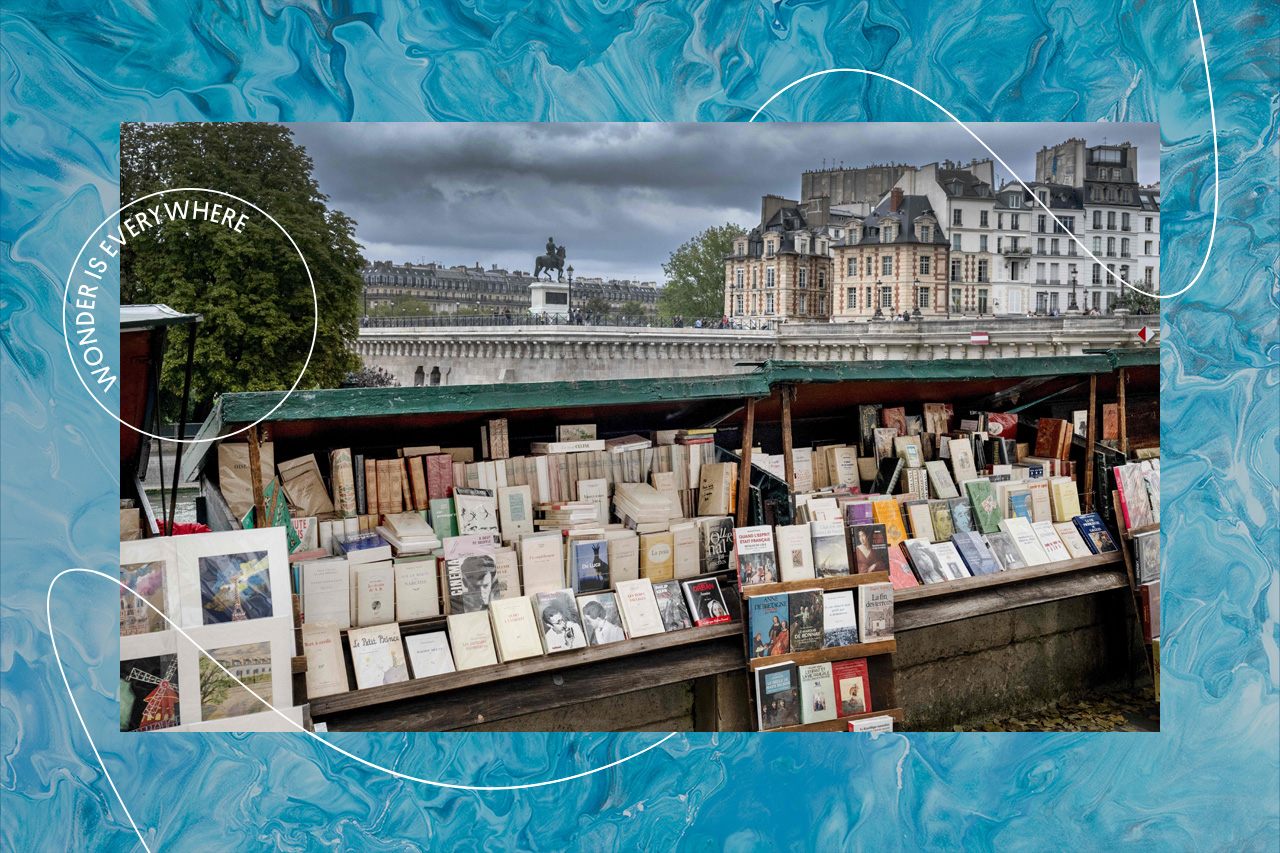Wonder Is Everywhere: The Island of Cows, a Parisian Bookseller Revolt, and More From Around the Web
Get a peek into what we’re obsessed with right now.
Wonder is everywhere. That’s why, every other week, Atlas Obscura drags you down some of the rabbit holes we encounter as we search for our unusual stories. We highlight surprising finds, great writing, and inspiring stories from some of our favorite publications.

The Republic of Cows
by Jude Isabella, Hakai Magazine
Chirikof, a remote island off the coast of Alaska, is about the size of two Manhattans—and home to more than 2,000 cows. Depending on whom you ask, writes Jude Isabella, the cattle are either unwelcome invasive megafauna or rightful heirs of a place they have inhabited for at least 200 years. Whether they stay or go will probably come down to human emotion, rather than historical or ecological evidence.
Saving Gaza’s History and Heritage
by Abdelhakim Abu Riash, Al Jazeera
Photographer Abdelhakim Abu Riash goes behind the scenes of a volunteer archival effort in Gaza. Without access to many modern resources, nine Palestinian women are working to preserve rare books and manuscripts and share them with the world.
“His Name Was Bélizaire”
by Alexandra Eaton, The New York Times
A 19th-century painting of three white children in a Louisiana landscape held a secret: the image of an enslaved child hidden beneath layers of paint. Now, New York’s Metropolitan Museum of Art restored the image and researchers believe they have identified the obscured figure as a 15-year-old boy named Bélizaire.

Europe’s Oldest-Known Village Teetered on Stilts
by Tom Metcalfe, LiveScience
Archaeologists on the border of Albania and North Macedonia have discovered what they believe to be the remains of an 8,000-year-old village—the oldest found in Europe—built out over an ancient lake. Researchers aren’t sure why the houses were built on stilts over the water, but speculate that it may have been a defensive strategy.
The Discovery That Sheds New Light on the Knights Templar
by The Week
A historian says he has made a “Da Vinci Code–style revelation”: eight medieval graves at St. Mary’s Church near Birmingham in central England. He believes the bodies are those of Knights Templar, members of a Christian military organization that played a role in the Crusades and lives on today in popular culture and conspiracy theories.
Was Plantation Slavery Developed on São Tomé and Principe?
by Kristina Killgrove, LiveScience
Archaeologists studying a 16th-century sugar mill and estate on São Tomé and Principe, an equatorial island off the coast of West Africa, believe they have found the roots of plantation slavery. Settled by the Portuguese in the late 15th century, the island was suitable for growing sugarcane, but dangerous for laborers due to the prevalence of malaria. By 1495, the Portuguese rulers had turned to enslaving people to solve their labor shortage—many from modern-day Benin, the Republic of the Congo, Angola, and the Democratic Republic of the Congo—and meet the demand for sugar.

The History Damaged in Conflict in Ethiopia
by Addis Standard
Two years of war in the Tigray section of Ethiopia may have damaged important historical and archaeological sites, says the country’s Authority for Research and Conservation of Cultural Heritage, as they begin an effort to evaluate and repair any destruction. Thankfully, the famed Bete Giyorgis of Lalibela, a church hewn from a single rock, was not harmed, the authorities said, but the conflict did delay vital restoration.
The Booksellers of Paris Are Revolting (Again)
by Ben Macintyre, The Times
The booksellers of Paris “have survived royal oppression, revolution, Nazi occupation, plague, censorship, political upheaval, urban developers, coronavirus, floods, the e-reader, and Amazon,” writes Ben Macintyre. The 2024 Olympic Games are just the latest threat. City authorities have ordered the bouquiniste stalls along the Seine be removed for the opening ceremony of the summer games. The booksellers are saying “non.”














































Follow us on Twitter to get the latest on the world's hidden wonders.
Like us on Facebook to get the latest on the world's hidden wonders.
Follow us on Twitter Like us on Facebook